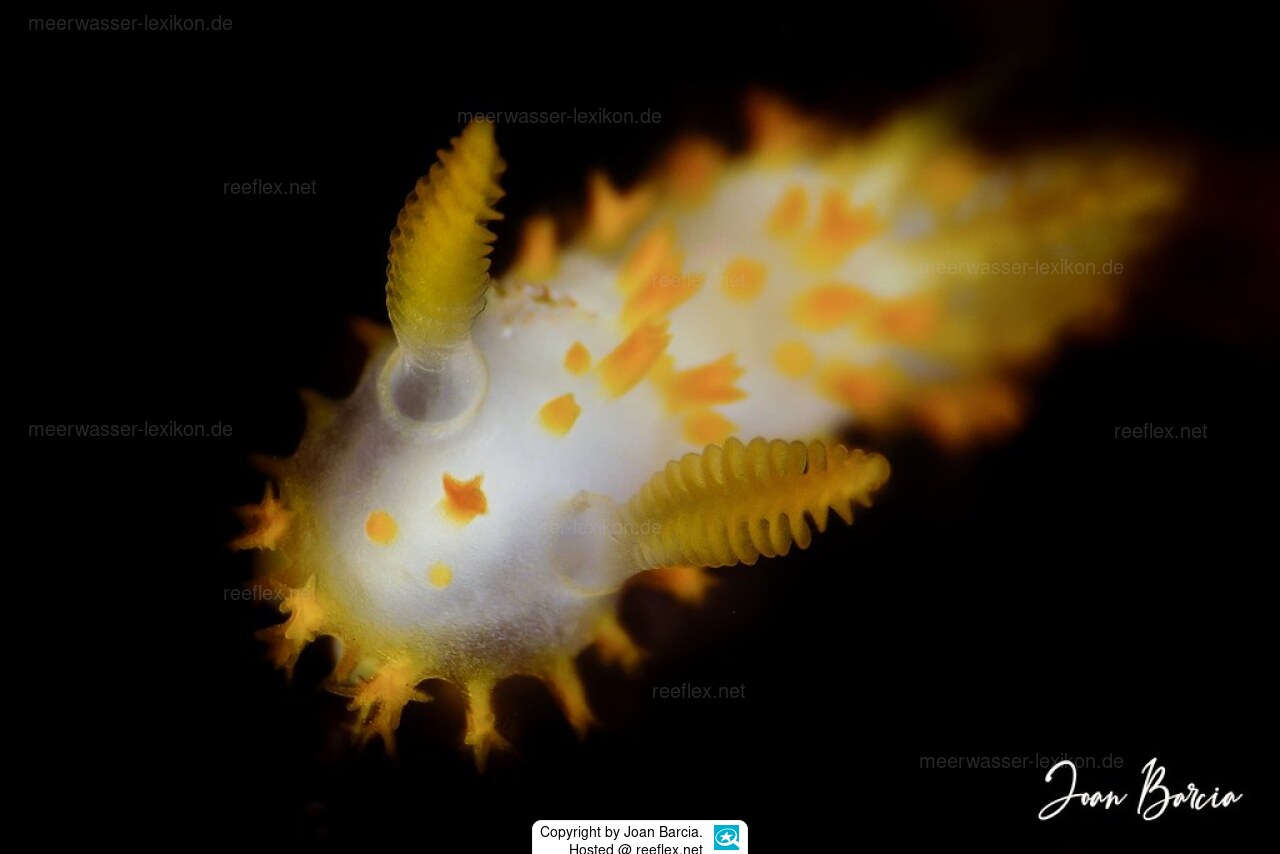Info
Crimora papillata Alder & Hancock, 1862
The species has its main distribution area from the west of the Mediterranean and north to the British Isles. It has recently been observed as a newcomer on the Swedish west coast and in Norway, where it was observed for the first time in Arendal in 2020, several times in Arendal and also in Larvik and Halden.
Crimora papillata has an elongated body. Along the edge of the body, on the back and along the tail there are small and short tubercles, divided into several small spikes at the tip. This is especially true of the tubercles on the sides of the back. On the middle of the back they are less branched. At the front around the head there are several tubercles, the tips of which have many branches. The rhinophores are long and lamellar, with up to 15 lamellae. They are protected by a short sheath at the base. The gill bush consists of 3 gills and is partially retractable.
The body color is partly transparent white or yellowish-white with yellow to yellowish-orange tubercles, rhinophores and gills. It lacks large and finger-shaped tubercles such as those found in Polycera and Limacia.
Alder and Hancock derived the surname Crimora from Ossian's Songs, a cycle of Gaelic poems compiled in 1765 by the Scottish poet James Macpherson. Here Crimora is a heroine grieving herself to death after accidentally killing the love of her life on the battlefield.
The species name "papillata" comes from Latin and refers to the tubercles that surround them.
The species has its main distribution area from the west of the Mediterranean and north to the British Isles. It has recently been observed as a newcomer on the Swedish west coast and in Norway, where it was observed for the first time in Arendal in 2020, several times in Arendal and also in Larvik and Halden.
Crimora papillata has an elongated body. Along the edge of the body, on the back and along the tail there are small and short tubercles, divided into several small spikes at the tip. This is especially true of the tubercles on the sides of the back. On the middle of the back they are less branched. At the front around the head there are several tubercles, the tips of which have many branches. The rhinophores are long and lamellar, with up to 15 lamellae. They are protected by a short sheath at the base. The gill bush consists of 3 gills and is partially retractable.
The body color is partly transparent white or yellowish-white with yellow to yellowish-orange tubercles, rhinophores and gills. It lacks large and finger-shaped tubercles such as those found in Polycera and Limacia.
Alder and Hancock derived the surname Crimora from Ossian's Songs, a cycle of Gaelic poems compiled in 1765 by the Scottish poet James Macpherson. Here Crimora is a heroine grieving herself to death after accidentally killing the love of her life on the battlefield.
The species name "papillata" comes from Latin and refers to the tubercles that surround them.







 Joan Barcia
Joan Barcia







